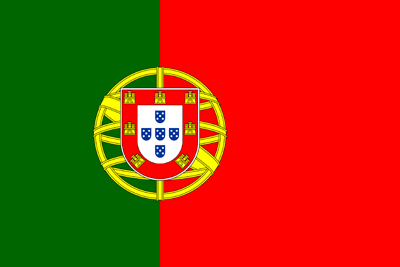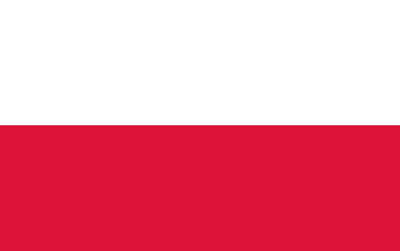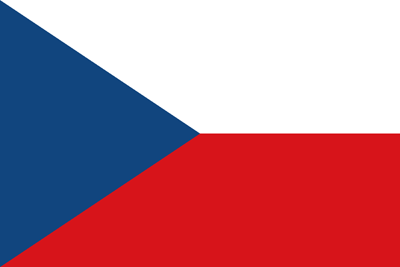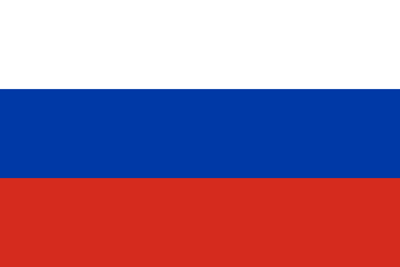Municipal Autonomous General Education Institution "Lyceum No. 4" of the municipal formation of the city of Cheboksary - the capital of the Chuvash Republic
"Reviewed"
Head of the MS
MAOU "Lyceum No. 4"
of the city of Cheboksary
_____ /______________ /
Protocol №____ dated
"___" _________2011
"Agreed"
Deputy Director for Educational Work
MAOU "Lyceum No. 4"
of the city of Cheboksary
_____ /______________ /
"___" _________2011
"Approved"
Director
MAOU "Lyceum No. 4" of the city of Cheboksary
_____ Konovalova N.V.
Order № ______ dated
"_" _________ 2011
WORK PROGRAM
in Chemistry for students of grade 8C
Implementation period: 2011-2012 academic year
The program is based on:
"Chemistry Course Program for Grades 8-11 of General Education Institutions" by Eremin V.V., Kuzmenko N.E., Lunin V.V., Drozdov A.A., Terenin V.I. – Moscow: Drofa, 2008.
Textbook (title, author, publisher, year of publication):
"Chemistry," Eremin V.V., Kuzmenko N.E., Lunin V.V., Drozdov A.A., Terenin V.I. – Moscow: Drofa, 2006.
Prepared by:
Teacher Lapteva Evgenia Pavlovna, highest qualification category
Number of hours:
Grade
Hours per week
Hours per year
Reserve hours
8
2
68
6
EXPLANATORY NOTE
In the natural science education system, chemistry as a subject holds an important place in understanding the laws of nature, in the material life of society, in solving humanity's global problems, in forming the scientific worldview, as well as in fostering ecological culture among people.
Purpose of the subject implementation:
To equip students with basic chemical knowledge necessary for everyday understanding, to lay the foundation for further advancement of chemical knowledge in higher grades, and to properly guide students' behavior in the environment.
Objectives of studying chemistry:
-
To form students' knowledge of the basics of chemical science: key factors, concepts, chemical laws and theories, scientific language, and accessible worldview generalizations.
-
To develop the ability to observe and explain chemical phenomena occurring in nature, laboratories, and everyday life.
-
To develop special skills: handling substances, conducting simple experiments following safety rules; correctly applying chemical knowledge in interaction with nature and daily life.
-
To reveal the humanistic direction of chemistry, its growing role in solving major problems facing humanity, and its contribution to the scientific culture of the world.
-
To foster students' intellectual and moral development, humanistic attitudes, and ecologically appropriate behavior in everyday life and labor activities.
Role of the subject in forming fundamental knowledge, skills, and key competencies:
The work program is based on "Chemistry Course Program for Grades 8-11 of General Education Institutions" by Eremin V.V., Kuzmenko N.E., Lunin V.V., Drozdov A.A., Terenin V.I. – Moscow: Drofa, 2008.
This program is implemented in the textbook: Eremin V.V., Kuzmenko N.E., Lunin V.V., Drozdov A.A. Chemistry. Grade 8. – Moscow: Drofa, 2006.
Differences from the model program:
The number of hours increased (by 1 hour) for the Introduction section due to conducting the practical work "Familiarization with laboratory equipment. Safety rules in the chemical laboratory."
The number of hours for Topic 1. Initial chemical concepts was reduced (by 4 hours) by condensing the studied material. Concepts of valency (moved from Topic 2. Oxygen. Hydrogen. Water. Solutions.), mole, molar mass were introduced, as they are necessary for calculations and formula writing of chemical substances. An additional hour was added to develop skills in solving chemical problems based on chemical reaction equations.
-
Topic 2. Oxygen. Hydrogen. Water. Solutions. Included the practical work "Obtaining hydrogen, determining its purity" to develop students' skills in conducting chemical experiments on gas production and collection, as well as distinguishing gases by physical and chemical properties.
-
Topic 4. Dmitri Mendeleev's Periodic Law. The study of the concept "coordination number" was replaced by "oxidation state."
-
Six hours reserved at the end of the year.
Thematic plan
№
Sections/Topics
Hours for
New material study and consolidation
Frontal control
1.
Introduction
2
Initial chemical concepts
16
1
3.
Oxygen. Hydrogen. Water. Solutions
16
1
4.
Main classes of inorganic compounds
14
1
5.
Dmitri Mendeleev's Periodic Law. Atomic structure. Chemical bond. Structure of substances in solid, liquid, and gaseous states.
14
1
6.
Reserve
6
Total:
68
4
Interdisciplinary connections:
Mathematics (when solving problems)
Physics (when studying molecular and atomic structure, as well as Topic 4 Periodic Law of D.I. Mendeleev, physical properties of substances and their compounds, etc.)
Biology (importance of chemical elements and compounds in life and activity of living organisms, effects of chemicals on organism formation and health)
Ecology (formation of humanistic attitudes and ecologically appropriate behavior in everyday life and labor)
Geography (location of chemical elements and compounds in nature, most appropriate application methods)
Technology (use in food, safety rules), etc.
Requirements for the students' level of preparation
As a result of studying chemistry in grade 8, the student must know/understand:
-
Chemical symbolism: chemical element symbols, chemical formulas, chemical reaction equations;
-
Key chemical concepts: chemical element, atom, molecule, relative atomic and molecular masses, ion, chemical bond, substance, classification of substances, mole, molar mass, molar volume, chemical reaction, classification of reactions, oxidation state, valency, oxidizer and reducer, oxidation and reduction;
-
Basic laws of chemistry: conservation of mass of substances, constant composition, periodic law;
Be able to:
-
Name chemical elements, compounds of studied classes;
-
Explain the physical meaning of the atomic (ordinal) number of a chemical element, group and period numbers to which the element belongs in Dmitri Mendeleev's periodic table; patterns of changing properties of elements within small periods and main subgroups;
-
Characterize chemical elements (from hydrogen to calcium) based on their position in Dmitri Mendeleev's periodic table and atomic structure features; chemical properties of main classes of inorganic substances;
-
Determine: the composition of substances by their formulas, belonging of substances to a certain class of compounds, types of chemical reactions, valency and oxidation state, type of chemical bond in compounds;
-
Compose: formulas of inorganic compounds; atomic structure schemes of the first 20 elements of Dmitri Mendeleev's periodic table; chemical reaction equations;
-
Handle chemical glassware and laboratory equipment;
-
Recognize experimentally oxygen, hydrogen, acid and alkali solutions;
-
Calculate: mass fraction of a chemical element in a substance, mass fraction of a substance in solution, amount of substance, volume or mass based on amount of substance, volume or mass of reactants or products;
-
Use acquired knowledge and skills in practical activities and everyday life for:
Safe handling of substances and materials;
Environmentally responsible behavior;
Assessment of chemical pollution impact on the human body;
Critical evaluation of information about household substances;
Preparation of solutions of given concentration.
Forms of knowledge, skills, and abilities control:
-
Conversation (in each lesson to develop students' ability to speak correctly using chemical terms and concepts) + individual questioning;
-
Independent work;
-
Tests (at the end of each topic);
-
Preparation of creative works and presentations on topics:
Plasma. Fire extinguishing. Fire extinguisher.
Air - a mixture of gases.
Life and work of D.I. Mendeleev. Prediction of properties of yet undiscovered elements.
Scientists studying atomic structure and elementary particles.
Crystals. Ways to grow crystals at home. Etc. -
Conducting and presenting home practical works on topics:
Physical and chemical phenomena in human activity. Signs.
Separation of homogeneous and heterogeneous mixtures.
Solubility of substances in water and its dependence on temperature.
Crystallization upon cooling saturated solutions.
Metals and non-metals in everyday life. Methods of identification. Etc. -
Solving homework problems according to samples compiled in class.
Educational-methodical complex
List of literature for the teacher:
-
"Chemistry Course Program for Grades 8-11 of General Education Institutions" by Eremin V.V., Kuzmenko N.E., Lunin V.V., Drozdov A.A., Terenin V.I. – Moscow: Drofa, 2008.
-
Textbook: Eremin V.V., Kuzmenko N.E., Lunin V.V., Drozdov A.A. Chemistry. Grade 8. – Moscow: Drofa, 2006.
-
Eremin V.V. Collection of problems and exercises in chemistry. – Moscow: LLC "Publishing House 'Onyx 21st Century'," 2005
-
Kim E.P. Chemistry. Grades 8-9. Practical works. – Saratov: Lyceum, 2009.
-
Lidin R.A., Margulis V.B. Chemistry. Didactic materials. Grades 8-9. – Moscow: Drofa, 2002.
-
Radetsky A.M., Gorshkova V.P. Didactic materials in chemistry. Grades 8-9. – Moscow: Prosveshchenie, 2005
-
Surovtseva R.P., Sofronov S.V. Assignments for independent work in chemistry in grade 8: Teacher’s book. – Moscow: Prosveshchenie, 2005
-
Khomchenko G.P., Khomchenko I.G. Collection of chemistry problems. – Moscow: Novaya Volna, 2001
List of literature for students:
-
Textbook: Eremin V.V., Kuzmenko N.E., Lunin V.V., Drozdov A.A. Chemistry. Grade 8. – Moscow: Drofa, 2006.
-
Kim E.P. Chemistry. Grades 8-9. Practical works. – Saratov: Lyceum, 2009.
-
Lidin R.A., Margulis V.B. Chemistry. Didactic materials. Grades 8-9. – Moscow: Drofa, 2002.
-
Surovtseva R.P., Sofronov S.V. Assignments for independent work in chemistry in grade 8: Teacher’s book. – Moscow: Prosveshchenie, 2005
-
Radetsky A.M., Gorshkova V.P. Didactic materials in chemistry. Grades 8-9. – Moscow: Prosveshchenie, 2005
List of additional literature, visual aids, and electronic textbooks:
Nazarova T.S., Kupriyanova N.S. Chemistry tables for general education school. – Moscow: Varson, 2006
Vlasenko K.K., Kuznetsova L.V. Series of educational chemistry tables. – Moscow: Uchbnaya kniga BIS, 2006
Nazarova T.S., Lavrova V.N. Reference-instructional tables on chemistry. – Moscow: Shkolnaya pressa, 2007
Open Chemistry, course author - professor of MIPT, academician RAS V.V. Zelentsov. – LLC "Fizikon", 2002.
Intel. Education for the Future., Microsoft., 2006.
Chemistry tutor Kirill and Mefody. – LLC "Kirill and Mefody", 2006.
CD-ROM – 2007. "Theory and methods of teaching chemistry." ChRIO, Department of Natural Science Education, 2007.
Electronic library "Prosveshchenie". Chemistry. – Moscow: Prosveshchenie, 2002.
Rules for Crossing the Road at a Controlled Pedestrian Crossing
Part 3. Topic 1. Dispersion Systems. Methods for Expressing Solution Concentration.
Explanation on the Opening of Duty Groups in Preschool Educational Institutions of the Bolsheosnovsky Municipal District
Recommended Offer Form for Legal Entities and Public-Law Organizations OFFER TO PURCHASE SHARES OF PUBLIC JOINT STOCK COMPANY "AEROFLOT – RUSSIAN AIRLINES" (Registration Number of Additional Share Issue 1-01-00010-A from 04.07.2022)

 Deutsch
Deutsch
 Francais
Francais
 Nederlands
Nederlands
 Svenska
Svenska
 Norsk
Norsk
 Dansk
Dansk
 Suomi
Suomi
 Espanol
Espanol
 Italiano
Italiano
 Portugues
Portugues
 Magyar
Magyar
 Polski
Polski
 Cestina
Cestina
 Русский
Русский